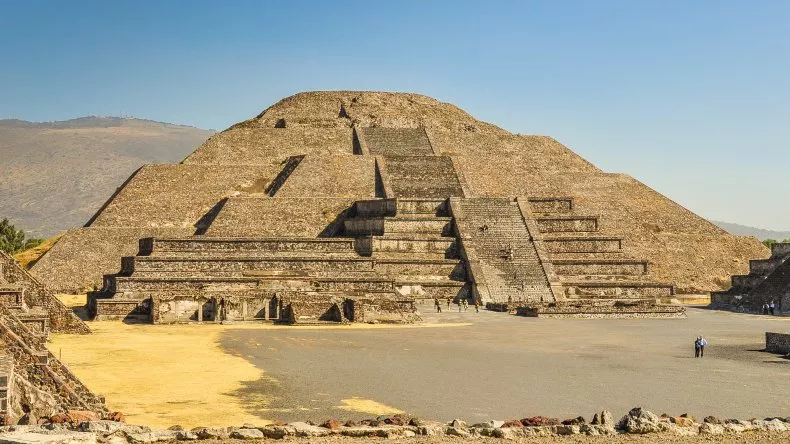### Walmart Implements Autonomous Forklifts in Distribution Centers
Walmart has recently introduced autonomous forklifts in several of its distribution centers, marking a significant advancement in its logistical operations. These forklifts are designed to streamline warehouse processes and enhance efficiency.
In this innovative initiative, a Walmart associate oversees the operation of these autonomous forklifts within the distribution center premises. This move exemplifies Walmart's commitment to leveraging cutting-edge technology to optimize its supply chain management.
The Walmart Legacy: A Story of Innovation and Growth
Walmart, the globally renowned big-box store chain, traces its roots back to 1962 when Sam Walton opened the first Walmart location in Rogers, Arkansas. Since then, Walmart has revolutionized the retail industry with its pioneering business strategies and relentless pursuit of customer satisfaction.
Sam Walton, the visionary founder of Walmart, embarked on this journey with a clear vision and unwavering determination. Born in Kingfisher, Oklahoma, in 1918, Walton's entrepreneurial spirit was evident from an early age. After graduating from the University of Missouri with a degree in economics, Walton gained valuable experience working for JCPenney before venturing into independent retail ventures.
In 1962, Walton established the first Walmart stores in Rogers and Harrison, Arkansas, laying the foundation for what would become a retail giant. His innovative approach to discount retailing, coupled with a deep understanding of consumer needs, propelled Walmart to unprecedented success.
Throughout his tenure as CEO, from 1962 to 1988, and later as chairman until his passing in 1992, Walton remained dedicated to the principles of quality, affordability, and customer service. Even during his battle with multiple myeloma, Walton continued to immerse himself in the intricacies of retail management, underscoring his unparalleled commitment to the Walmart brand.
Today, Walmart stands as a testament to Sam Walton's enduring legacy, embodying his values of innovation, integrity, and relentless pursuit of excellence. With each passing year, Walmart continues to evolve and adapt, shaping the future of retail with its unwavering commitment to serving customers worldwide.
From Humble Beginnings to Walmart's Rise
Humble Beginnings
Sam Walton, the visionary behind Walmart, initially experimented with a business model aimed at undercutting competitors' prices during his tenure at his Ben Franklin branch. Despite the lower profit margins, he believed that higher demand and sales volume would compensate for it. Indeed, his revenue more than doubled from $105,000 to $250,000 within the first five years.
One of Walton's early ventures, Walton's 5-10, now a museum in Bentonville, Arkansas, stands as a testament to his entrepreneurial journey. Following the closure of his Ben Franklin branch, Walton established the discount store, which later became the Walmart Museum. Shortly thereafter, he inaugurated the first Walmart store in Rogers, Arkansas, marking the birth of the iconic brand.
Walmart's Rise to Prominence
By the end of 1962, Walton had expanded his enterprise to include two Walmart stores, with locations in Rogers and Harrison. The 1960s witnessed continued growth, with two dozen stores across Arkansas generating $12.7 million in sales by 1967.
The expansion beyond Arkansas began in 1968, with the inauguration of the first Walmart stores outside the state. By 1969, the company officially incorporated as Wal-Mart Stores, Inc., and went public a year later. The momentum continued, with Walmart's listing on the New York Stock Exchange in 1972.
By 1980, Walmart's footprint extended to 10 states, boasting 276 stores and employing 21,000 people, with annual sales reaching $1 billion. The 1980s marked further milestones, including the debut of Sam's Club in 1983, a chain of membership-based warehouses.
Walmart's growth trajectory in the 1980s was fueled by strategic acquisitions, including Kuhn's Big K, and by the decade's end, the company operated in 27 states, with annual sales soaring to $26 billion.
### Walmart's Current Status
Walmart's Global Presence and Impact
Walmart, the largest retailer both in the U.S. and globally, operates more than 10,500 stores across 19 countries, with a workforce of over 2.1 million individuals, predominantly 1.6 million in the U.S. (Photographer: David Paul Morris/Bloomberg via Getty Images / Getty Images)
The company experienced remarkable growth in the 1990s, expanding to nearly 4,000 locations worldwide by the turn of the millennium, employing over a million individuals. Following the passing of its founder, Sam Walton, his son Rob succeeded him as chairman of the board, a role he held until 2015.
In recent years, Walmart has been actively engaged in community outreach efforts, notably spearheading mass vaccination campaigns during the COVID-19 pandemic and implementing initiatives to cover college expenses for its associates.













0 Comments